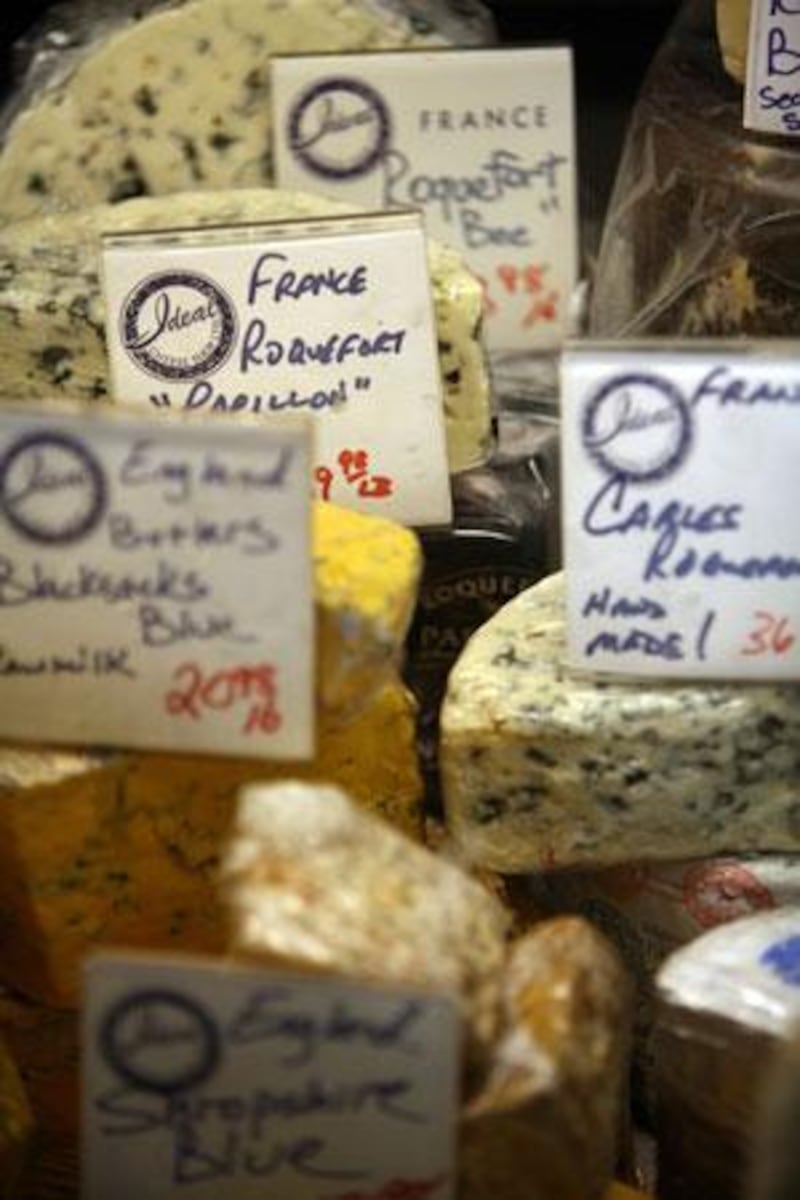If you have ever had to manoeuvre your luggage around stacked pyramids of Nido powdered milk at Abu Dhabi International Airport's duty free, then you know it's like navigating an obstacle course. Users and pushers of the non-perishable dairy product are a diehard breed; persistent and thriving. What traditional Emirati household would be complete without a jar of Puck processed cream cheese spread destined for small, squishy loaves of white bread? There was Kiri in its periwinkle casket, Babybel in its waxy red cocoon - and, also from Fromageries Bel, jovial wheels of The Laughing Cow.
The popularity of UHT milk and cream rages on, as does our sentimental fixation on Rainbow evaporated milk and Carnation condensed milk in lieu of fresh milk, which is now neither a novelty nor a source of nostalgia. When I was growing up, our house "cheese" was the hefty brick of bright orange paste from Kraft, packed austerely into a blue box. When it was available, we'd stock up on Velveeta, which sounded so promising but was only marginally less inedible.
As grocery stores in the Emirates became more sophisticated, so did our palates. Wielding sticks of string cheese, we didn't miss the ubiquitous white processed stuff in a plastic tube whose ends were inexplicably strangled with tenacious steel clips. We'd slap mozzarella cheese slabs on plates and heat in the microwave until it sizzled, then we'd eat it in long gooey strands like fantasy pasta. And once, we melted an expensive hunk of raclette into a rank mess that rendered the kitchen an olfactory hot zone for days. Until very recently, it was difficult to find raw (unpasteurised) cheese in Abu Dhabi, and our choices were limited.
For some time now, I've been hatching a not-so-secret plan to get America's first restaurant-based maître fromager, Max McCalman at Artisanal Fromagerie and Bistro, a piece of kunafeh. I love cheese instead of dessert, but even more, I like cheese in dessert. An old saying that I love goes: "An apple pie without the cheese is like a kiss without the squeeze," and there are few things that can elevate an ordinary apple pie like some sharp Cheddar worked into its buttery crust, or a thin, crisp pear tart scattered with Stilton crumbles.
Many people believe themselves to be lactose-intolerant. Once we reach adulthood, most of us produce less (if any) lactase, the enzyme that enables us to digest fresh milk. People of northern European descent are much more likely to be able to handle their lactose than Asians, Africans and Native Americans, probably because in warmer climates where it was too hot to keep fresh milk around, it had to be turned into something that kept longer, such as real yoghurt.
Yoghurt's bacterial cultures produce lactase of their own, thus requiring less human lactase for digestion. Laban, ayran, kefir, lassi, doogh and buttermilk are other examples of cultured products that were made from milk and consumed in warm climates by a primarily lactose-intolerant people. But half cream, single cream, double cream, quintuple cream? Historically, these things were eaten by people who could store them properly, and they have the biological constitutions to prove it.
My mind swirls with the varieties of cream out there - too many to count: light cream, heavy cream, clotted cream, sour cream, crème fraîche and kaymak. There's Russian baked milk, which can be kept at room temperature for 40 hours, and then there are the irresistible caramels, Mexican cajeta and South American dulce de leche. The latter can easily be made at home with little more than an oven and a jar of sweetened condensed milk.
Of all milks, human milk has the highest lactose percentage at around 9 per cent. And at Manhattan's Klee Brasserie, the chef Daniel Angerer served a special homemade cheese until he was prohibited from doing so. His wife, who was nursing at the time, was the source of his raw materials. An allergy to milk can happen to anyone, but it's fairly common among infants. Most outgrow it, but goat's milk is an alternative to cow's milk, and is believed to be less allergenic and easier to digest, as well as being far more nutritious and free of the growth hormones that are controversially administered to cattle.
I've read about the deliciously unhomogenised and gloriously contraband raw milk of grass-fed cows, brimming with sweet, creamy goodness and all the heat-sensitive nutrients we have lost in store-bought milk, but I've not yet had the chance to taste any. It's no coincidence that when the fat is removed from milk, it becomes watery, grey and tasteless to reflect its compromised nutritive state: reduced-fat milks have to have vitamins added back to them to compensate for what is lost with the fat. You might be able to add some vitamins, but you can't restore the flavour.





